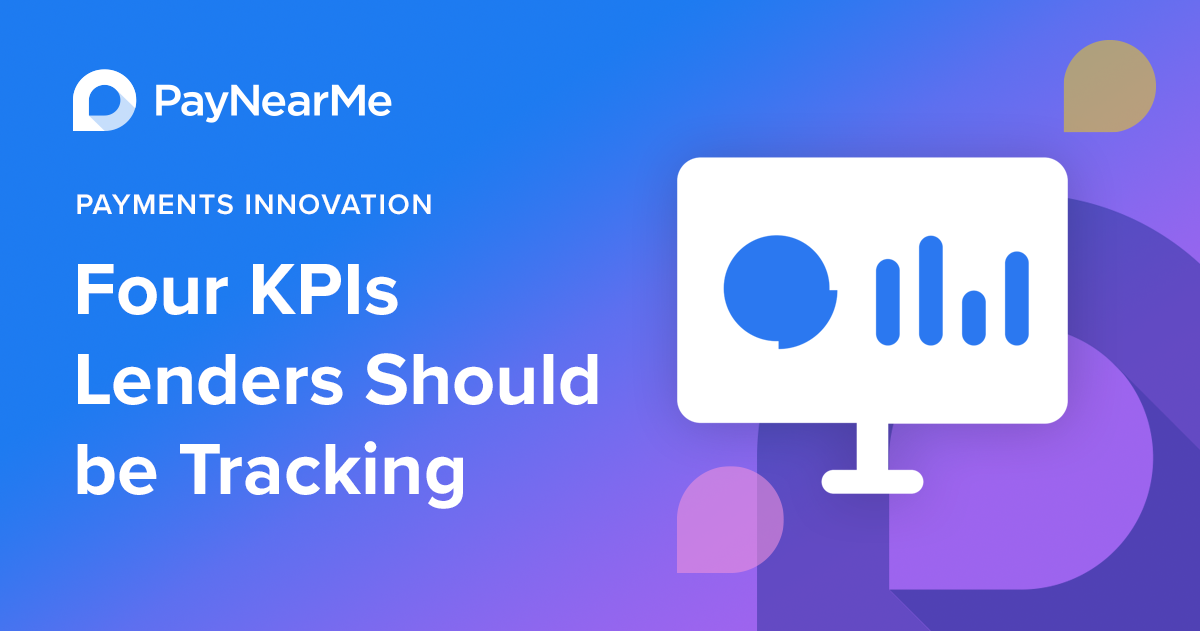Four KPIs Lenders Should be Tracking

In the world of payment processing, it’s easy to understand why billers use the percentage of successful payments as a metric to measure against business outcomes.
For payment professionals who would like to take a more proactive role in their organization’s strategic objectives, it’s important to examine the driving forces and key metrics behind successful payment transactions.
Tracking the right KPIs enables businesses to uncover opportunities for growth and improvement, while following the wrong KPIs can lead the organization off-course.
Consumer lending is unique from their counterparts in that the lender-borrower relationship is not confined to a one-time transaction, rather it relies on a repayment schedule for a fixed amount of time until the loan has been paid in full. If a lender can provide excellent experience throughout the lifespan of a loan, they may be able to convert existing customers into repeat borrowers.
As the economy continues to fluctuate, it becomes more imperative for lenders to cater to customer payment preferences and existing behaviors. Doing so will help all borrowers build healthy financial habits and grow the number of on-time payments.
While each business is unique, here are the 4 KPIs lenders should be paying close attention to (if they aren’t already).
#1 Conversion Rate by Payment Channels
The conversion rate is defined as the percentage of successful payment transactions. When lenders segment these transactions by payment channel, they can identify how their borrowers prefer to make payments and if there are any elements of their payment mix being under-utilized.
If for instance, agent call volume begins to trend upwards, lenders can launch initiatives that encourage borrowers to make payments through self-serve channels like PayNearMe’s Smart Link™, QR Codes, or walk-in cash payments. Increasing the percentage of self-serve payment channels can lower operational costs including the number of staff needed to manage inbound payment calls. Self-serve payment channels free up that staff to focus on serving customers who have a need to speak to an agent, such as refinancing or adjustments.
#2 Exceptions by Payment Types
Returned payments can occur for many reasons and can be equally frustrating for both the lender and borrower. Lenders can sort returned payments by payment types. To promote acceptance rates, lenders can recommend alternative payment types that contain the smaller share of returns.
PayNearMe’s Business Rules allows a lender to create a rule that if a payment method has been returned for a specified number of times, that payment option can be disabled to redirect the borrower to a more acceptable payment type.
#3 Cost per Transaction
Providing a healthy mix of payment methods for borrowers to choose from supports customer satisfaction and positively impacts on-time payments. With that being said, lenders understand that each payment method carries a transaction fee that can vary. For lenders who are prioritizing customer choice, minimizing the overall cost per transaction may not be so urgent.
It’s important to note that lenders can focus on customer choice and the total cost per transaction simultaneously. For example, a lender can allow their borrowers to choose whether they’d like to receive their disbursements via a debit card or their bank account (ACH). Since the processing fee for ACH disbursements costs less than for debit card disbursements, lenders can configure their payment collection form in a way that makes both options available but highlights the option to disburse via ACH.
#4 Time to Pay
Lenders can further influence on-time payments by experimenting with the delivery of payment reminders. They can see if there is any correlation between payment reminders sent at different times of the day or different days of the week and the number of on-time payments. Are lenders sending reminders at the same time borrowers are thinking about their bills? By calculating the amount of time it takes for a borrower to make a payment after receiving a payment reminder, these firms can align their customer engagement strategy with existing consumer habits.
By exploring the drivers that affect on-time payments, lenders can reduce call center volume, increase on-time payments and improve operational efficiency—all contributing to positive results on the bottom line.




